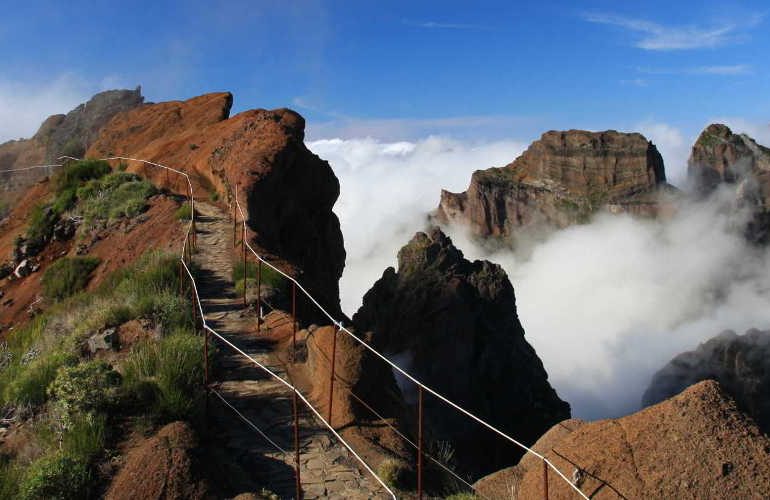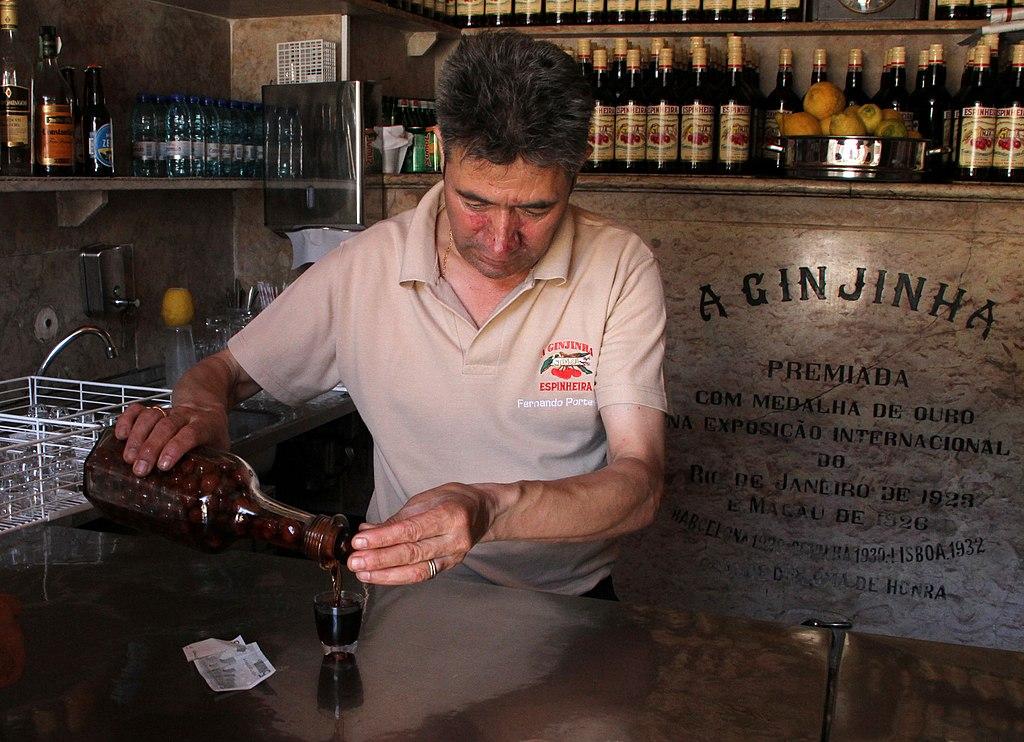Portugal is home to a plethora of magnificent monasteries, some of which are believed to be as old as the country itself.
Alcobaça Monastery

This Roman Catholic monastery is located in the central Portuguese town of the same name, approximately (120km) north of Lisbon. It is regarded as one of the most important medieval monastery complexes in Portugal, having been commissioned by King Afonso Henriques in 1153. The church and monastery, both of which are great examples of Gothic architecture, were 1989 inscribed on the UNESCO World Heritage List. From its inception until the 18th century, the complex underwent several alterations. The church’s transept contains royal tombs that are well worth viewing. Visit the monastery’s Chapter House, which is adorned with magnificent Baroque statuary, as well as the kitchen, which features a massive central chimney. The Cloister of Silence, with its ornate columns, is also quite lovely.
Batalha Monastery

This is another 1983 UNESCO World Heritage Site. Officially known as the ‘Monastery of Saint Mary of the Victory,’ this complex of monasteries is one of the best-preserved in Portugal. It was constructed in the 14th century to commemorate the Battle of Aljubarrota; nonetheless, it became the burial church for the Portuguese monarchy in the 15th century. From adorned columns and vaulted ceilings to cloister windows and flying buttresses, this complex possesses all of the design aspects necessary to make it not just distinctive but also study-worthy. Within the ancient Manueline cloister, there is a lovely fountain that immediately draws the eye. Additionally, there is a particular area dedicated to the Tomb of the Unknown Soldier from World War I.
Monastery of Dumio

The Monastery of Dumio (sometimes spelt Dumium or in Portuguese, São Martinho de Dume) is a former paleo-Christian monastery located in the civil parish of Dume in the municipality of Braga, northwest Portugal. Originally a Roman villa, it served as the foundation for a Suebi tribal basilica and then a Christian monastery led by Martin of Braga in the sixth century (about 550–560). The late-twentieth-century rediscovery of the Roman ruins resulted in archaeological excavations that revealed the site’s former function.
Jerónimos Monastery

Also known as Hieronymites Monastery This is a UNESCO World Heritage Site, having been inscribed in 1983. This building, located in western Lisbon’s parish of Belém, was commissioned in the early 16th century by King Manuel I on the site of the old church of Santa Maria de Belém. This monastic complex is approximately 55 square metres (592 square feet) in size and has two levels. The bottom storey was created by prominent Manueline architect Diogo de Boitaca and contains large arcades ornamented with exquisitely detailed Gothic and Renaissance-style colonnettes. In one of these arcades is the sober tomb of the poet Fernando Pessoa, while several other tombs in the chapterhouse contain the remains of the poet and playwright Almeida Garrett (1799–1854), the writer-historian Alexandre Herculano (1810–1877), former presidents Teófilo Braga (1843–1924) and Óscar Carmona (1869–1951). Within the church, in the lower choir, are the stone tombs of Vasco da Gama (1468–1523), and of the great poet and chronicler of the Age of Discoveries, Luís de Camões (1527–1580). Both tombs were sculpted by the 19th-century sculptor Costa Mota in a harmonious neo-Manueline style. The mortal remains of both were transferred to these tombs in 1880.
Monastery of the Mónicas

The Monastery of the Mónicas (Portuguese: Mosteiro das Mónicas), located in São Vicente, Lisbon, was a Portuguese nunnery dedicated to the mother of Augustine of Hippo, Saint Monica. It later became a prison.
In 1585, a monastery was established dedicated to the religious Order of Saint Augustine, through the initiative of Maria de Abranches, on lands and buildings of her father, Álvaro de Abranches, Captain-major of Azamor. The first stone was laid on 1 January 1586 and the first nuns began arriving on 11 October of the same year. The Cenobitic monastery included 100 devotees, with the three principal founders coming from a building in Évora, dedicated to Menino Jesus (the infant Jesus). The convent chapel was consecrated in 1586.
Monastery of Rates

The Rates Monastery (Portuguese: Mosteiro de Rates) was a Benedictine monastery in Portugal, located in the parish of Rates in the municipality of Póvoa de Varzim. The monastery’s bell tower and, most significantly, the Parish Church of St Peter of Rates (Igreja Paroquial de São Pedro de Rates), also known as the Romanesque Church of Rates (Portuguese: Igreja Românica de Rates), have remained standing since 1910 as a national monument. The church was restored between the 11th and 12th centuries, transforming it into one of the earliest extant Romanesque churches in Portugal.
The middle ages of the monastery of Rates were one of the most significant in Portuguese Romanesque art; the relationships it established with the ruling powers, the significance of its architecture and sculptures with diverse influences make this temple a case study that is reflected in the production of the nascent kingdom of Portugal’s Romanesque art. The temple’s origins, as they pertain to the church, are dated to the Suebi-Visigothic period, although it incorporates older Roman-era components. Additionally, it is associated with the Asturian-Leonese period, prior to the Romanesque rebuilding.
Monastery of São Martinho de Tibães

The Monastery of St Martin of Tibães (Portuguese: Mosteiro de São Martinho de Tibães) is a monastery in the parish of Mire de Tibães near Braga in northern Portugal. It was the motherhouse of the Benedictine order in Portugal and Brazil, and it is known for its church’s exuberant Rococo interior.
The oldest mention of a monastic community in the region originates from the sixth century when Saint Martin of Braga founded the Monastery of Dumio near Tibães.
The Tibães Monastery was built around 1060, and Henry of Burgundy, Count of Portugal, awarded it feudal rights in 1110. During the Middle Ages, once the Kingdom of Portugal gained independence, the Monastery acquired rich and vast lands in the country’s north. However, due to intensive repair work in the 17th and 18th centuries, no architectural traces from this early period remain.
The monastery became the motherhouse of the Order of Saint Benedict for Portugal and the colony of Brazil in 1567, with the Order’s first general gathering in Tibães in 1570. With the old monastery in ruins and tremendous resources at their disposal, the monks began the major renovation that gave rise to the ensemble that exists today in the first part of the 17th century. The refectory and cemetery cloisters, as well as the church, were erected between 1628 and 1661 in Mannerist style by architects Manuel Álvares and João Turriano. By the early 18th century, the monastery’s additional wings, which included the Gate House, Dormitory, Guest House, Chapter House, and Library, had been completed.
During the 17th and 18th centuries, the monastery was a hub of artistic activity, exerting a significant effect on Northern Portuguese and foreign colonies’ Baroque and Rococo art. André Soares designed the main altarpiece, the woodwork of the triumphal arch of the main chapel, as well as the pulpits and lateral altarpieces, all of which are landmarks in Portuguese Rococo art, between 1757 and 1760. José de Santo António Vilaça carved the gilded woodwork. Cipriano da Cruz, another well-known sculptor, is responsible for several of the statues throughout the church.
The Tibes Monastery and its surrounding environs fell into deterioration and ruin after it was auctioned off in 1864. In 1894, a fire destroyed much of the complex, including the refectory cloister. The Monastery was declared state property in 1986, and an enormous restoration project began that is still ongoing today.
Monastery of Serra do Pilar

The Monastery of Serra do Pilar is a former monastery located in Vila Nova de Gaia, Portugal, on the opposite side of the Douro River from Porto. The monastery is situated on an outcrop overlooking the Dom Luís I Bridge and the historic centre of Porto. Together with these locations, the monastery was designated a UNESCO World Heritage Site in 1996. The monastery is notable for its church and cloister, both of which are circular.
Monastery of Santa Maria de Maceira Dão

The Monastery of Santa Maria de Maceira Dão is a monastery in the civil parish of Fornos de Maceira Dão, in the municipality of Mangualde in the Portuguese central subregion of Dão-Lafões, classifies as National Monuments (Portuguese: Monumento Nacional).
The monastery is located five kilometres from the centre of the municipal seat of Mangualde, accessed from the Estrada Nacional E.N.16 at the 105.6 kilometres marker, in the village of Vila Garcia, then by the municipal road 1441, along a dirt road towards the Moinhos do Dão. Santa Maria is located in an isolated, rural landscape, situated on a fertile valley of the Dão River. It is set between the Serra de Santo António dos Cabaços and the Serra de Fagilde, relatively close to the settlement of Vila Garcia.
The monastery was founded in 1173 in its actual location.
| Latitude: | 40° 36′ 57″ N |
|---|---|
| Longitude: | 7° 49′ 38″ W |
| Lat/Long (dec): | 40.61608,-7.82746 |
The property is currently privately owned and the monastery is virtually abandoned.
Monastery of Lorvão

This 6th-century monastic complex, also known as the Abbey of Our Lady of Lorvão or simply Lorvão Abbey, is located in the municipal parish of Lorvão in Portugal’s Coimbra District. According to historical texts, this complex developed at first because it was an important centre of trade between northern Christian inhabitants and southern Muslim authorities. Indeed, this monastery’s workshops were well-known in the 12th century for their magnificent illuminated manuscripts. However, this structure was unable to withstand the fall that most Portuguese monasteries experienced following the dissolution of religious organisations in the nineteenth century. Surprisingly, the building was converted into a psychiatric institution at the turn of the twentieth century. At the same time, it was designated as a national monument. The hospital closed in 2012, and the complex has since been home to a museum highlighting holy arts.
Monastery of Saint Peter of Cête

This monastic structure from the tenth century is located in the civil parish of Cête in the municipality of Paredes in northern Portugal. Although the majority of the complex is constructed in late-Romanesque style, there are some attractive Gothic components, such as the church’s bell tower. The complex was originally commissioned by the Portuguese lord Gonçalo Oveques and later repaired during the 12th and 14th centuries under the patronage of the abbot D. Estêvo Anes. Following these repair attempts, several Manueline period components were added, which may be seen in the chapter hall and major cloister. The monastery’s interior features exquisite limestone reliefs of Saint Peter, Saint Lucia, and Our Lady of Grace, as well as a fresco of Saint Sebastian.




